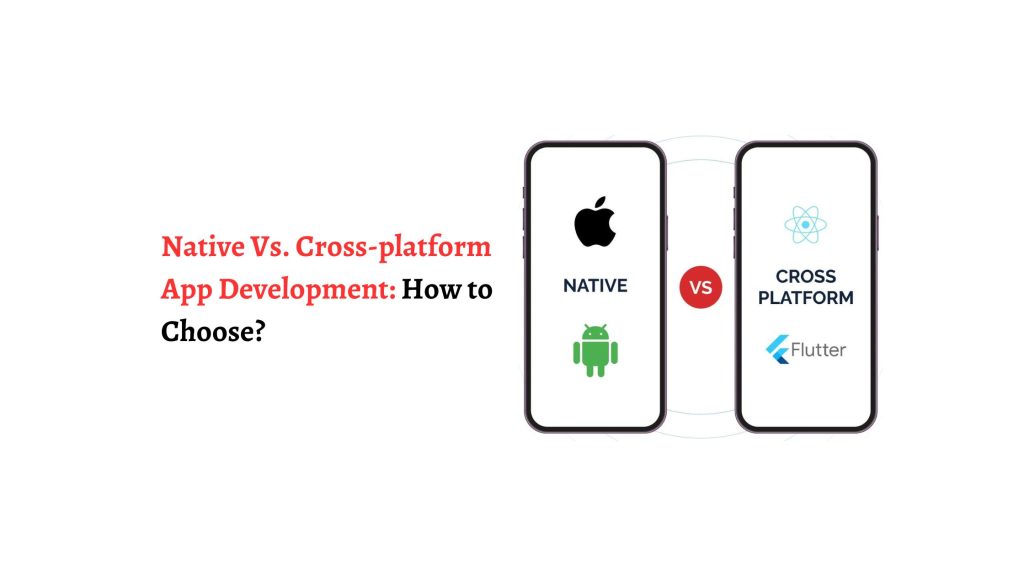Native Vs. Cross-platform App Development: How to Choose?

Whether it is entertainment, ordering food, or communicating with customer service, mobile apps are used for almost everything. The increasing demand for mobile applications has also opened up the opportunity for various businesses to increase their ROI and customer reach or retention.
As a result, they want to hire a reliable mobile app development company to build an intuitive application with seamless integration and functionality. However, your application’s performance in the market depends on the app development strategy. You can develop your application with native or cross-platform app development methods, targeting specific or multiple operating systems according to your needs.
Which App Development Method is Better? Native or Cross-platform
Choosing between native or cross-platform development has enormous implications for the app’s design and the technologies used to create it.
1. Understand Your Project Requirements
Defining your project requirements beforehand is the foremost factor in making the right decision for app development. Various parameters fall under this category, including security, performance, technology, features, and functionality. Hence, understand your requirements to know which methodology can fulfill them.
Do you want a detailed comparison between Flutter, a cross-platform app development framework, and a native app development approach? Our blog, Flutter vs. Native App Development, can help you make the right choice for your business.
2. Budget Considerations
How much does it cost to build a mobile app? Most businesses are concerned about this, and thus, they look for an effective app development process. Cross-platform app development is a suitable solution for aspiring startups with limited budgets.
The open-source frameworks used for cross-platform app development can deploy applications for multiple operating systems with a single team, further decreasing the app development costs.
3. Platform Choice
Your choice of platform, whether it’s iOS or Android, is a pivotal factor in determining the most suitable app development approach for your business. Both platforms hold significant market shares, making it crucial to consider your target audience and business goals when making this decision.
For instance, if you want robust security, you can choose to work with Swift and choose the iOS platform. On the other hand, if you want to leverage the huge user base of Android, you can select its native app development technologies.
Furthermore, cross-platform app development is the best choice to launch a app for both iOS and Android platforms that offers a native-like experience.
4. Time to Market
The total time it takes to build and launch the application is critical to deciding the app development approach. If you want to launch your application faster, cross-platform development will help you accelerate the process. In contrast, working with native technologies is time-consuming since you must build and test applications for multiple platforms separately.
5. Performance
Your customers expect a smooth user experience navigating through the application. Therefore, you must consider performance before setting your app development requirements. In cross-platform app development, developers must put extra effort into integrating in-built device features. On the other hand, optimizing performance with native app development technologies is relatively easier.
Conclusion
With native app development, you can create an application that function on specific platform you select. Whereas, cross-platform app development framework like Flutter allow you develop an application working seamlessly across multiple platforms.
Therefore, choose mobile app development services that best suit your business needs. Moreover, keep security, performance, and scalability in mind before selecting a methodology for developing an application.





